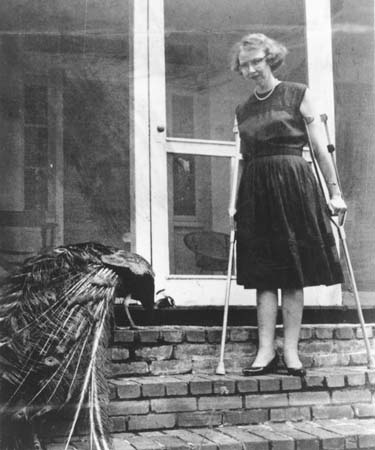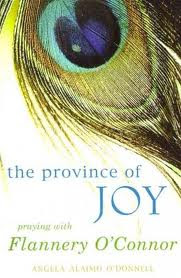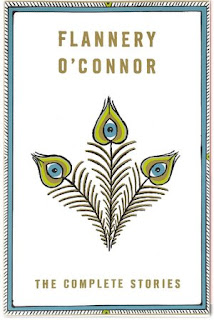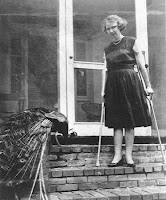Yesterday I reviewed a beautiful new book titled The Province of Joy: Praying with Flannery O’Connor.
Author Angela Alaimo O’Donnell, an English professor at Fordham University, collected Flannery’s spiritual writings, along with prayers and her own reflections, to produce a deeply meditative book.
I’m a huge fan of Flannery’s work, so I asked Angela if she’d be willing to discuss it with me. Below is our interview in which we cover several topics including Flannery’s faith, her personal letters, and her relevance for the world today. Enjoy!
Q: Flannery O’Connor is renowned as one of the twentieth century’s top writers. Yet many ignore her Catholicism. How did Flannery’s faith shape her work?
 O’Connor was a cradle Catholic who grew up in the American south, a part of the country where Catholics were rare and were regarded with a good deal of suspicion by their Protestant neighbors. So O’Connor grew up with a sense of being different, of belonging to a people set apart, and that difference creates, for the writer in particular, a wonderfully detached perspective from which to view the world around you. O’Connor was a great observer of her fellow human beings, and her identity as a Catholic enabled her to see them with fresh eyes.
O’Connor was a cradle Catholic who grew up in the American south, a part of the country where Catholics were rare and were regarded with a good deal of suspicion by their Protestant neighbors. So O’Connor grew up with a sense of being different, of belonging to a people set apart, and that difference creates, for the writer in particular, a wonderfully detached perspective from which to view the world around you. O’Connor was a great observer of her fellow human beings, and her identity as a Catholic enabled her to see them with fresh eyes.
This keen observation manifests itself in her writing, especially in the peculiar details she includes—the ones that enable us to see her characters as fully realized human beings you might just run into at the Piggly Wiggly.
In addition, O’Connor’s Catholicism taught her young that the Creation—along with the human beings who occupy it—is inherently good and much loved by God. It had, of course, been corrupted by sin and the devil, but at root, the world was so beloved by God that he entered it as a human being and he died for it on the cross.
The world has been redeemed by the Incarnation, through the grace of God, and her stories operate with that understanding as a reality. Many of O’Connor’s stories are about the ways in which human beings come to a sudden understanding of that theological fact and the ways in which their lives must be transformed by that knowledge.
Q: While collecting Flannery’s letters and essays for Province of Joy, was there anything that surprised you?
I loved re-reading O’Connor’s letters, in particular, through this lens of discovering what she had to say about her faith and her prayer life. It made me realize how enormous this preoccupation was for her. She writes about theological matters as much as she writes about literary matters—perhaps more so! This is remarkable for a fiction writer, of course, even one who is a serious Catholic, and was a revelation to me.
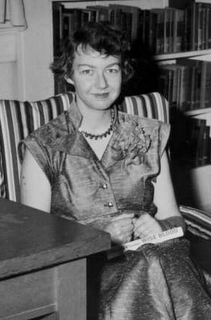 In addition, I was very struck in re-reading the letters by the degree to which they read like public statements as well as private ones. Certainly, O’Connor addressed her letters to the friends she was writing to—Elizabeth Hester or Billy Sessions or whomever—and there is an intimacy there, but she also seems to be writing to and for you, the reader.
In addition, I was very struck in re-reading the letters by the degree to which they read like public statements as well as private ones. Certainly, O’Connor addressed her letters to the friends she was writing to—Elizabeth Hester or Billy Sessions or whomever—and there is an intimacy there, but she also seems to be writing to and for you, the reader.
Critics and biographers have commented on the fact that O’Connor seemed to know from early on that her letters might be of interest to posterity after her death. (I suppose this is something all writers hope for!) And she did give permission for them to be published before she died. So one hears in those letters not just off-the-cuff remarks about faith, but carefully crafted statements that convey her deepest convictions. There is something poignant in this idea, for me. She wanted all of us—distant strangers as well as close friends—to understand how much her faith meant to her.
Q: You designed your book as a book of hours, following Flannery’s own penchant for liturgical prayer. Why did she favor this over other forms?
O’Connor was a traditional, pre-Vatican II Catholic, and she had been schooled in the ways in which Catholics pray. She had been exposed to liturgical prayer from childhood onward through Mass attendance, and she had been taught the many beautiful prayers Catholics say—the Hail Mary, the Our Father, the Act of Contrition, the Creed, etc. For O’Connor, this was the only way to pray that was sanctioned by the church.
This is very different, of course, from the kind of prayer many of her Protestant neighbors would have engaged in. O’Connor would have found the emotion-driven, revival-meeting style prayer of Southern charismatic Christians to be deeply problematic.
The Catholic view is that our prayers have been handed down to us by tradition, by the Church, by the saints, and by Christ himself. Why would you invent prayers when there is this rich, beautiful, and powerful tradition of language that links us to the early Christians and to our Hebrew forbears? Is it really possible to improve upon the Psalms and the liturgy?
In addition, O’Connor had great reverence for the monastic tradition of praying the hours, associated with the Benedictines and the other great orders of religious men and women. By praying the hours—even if it is only prime and compline (morning and evening prayer)—you are joining your voice with those of men and women all over the world, offering your voice up to God in unison with theirs. Thus, private prayer becomes a kind of communal prayer, even if you are alone.
This is one form of participation in the Communion of Saints that is available to all Catholics. I imagine this must have been a particularly powerful draw for O’Connor, who lived a very solitary life at Andalusia farm for the last 13 years of her life.
Q: Flannery’s short stories are known for their macabre twists and flashes of grace. But in terms of spirituality, what themes typified her faith?
As I was conceiving of the organizational principle for The Province of Joy, it made sense to me to look to her stories: What were the revelations experienced by her characters? What hard lessons of life did they learn, through the strange experiences that befell them? How were they changed by this powerful new spiritual knowledge? I looked to her characters because, in many ways, they are living out the paradigm of every Christian in the world—and the paradigm she, herself, was subject to. Their struggles are our struggles—and hers as well.
O’Connor knew, for example, that spiritual blindness was an enormous potential stumbling block for the practicing Christian. It is arguable that the person whose soul is most imperiled is one who believes him- or herself to be “saved”—and then runs around trying to “save” everyone else. So she writes a number of stories in which characters experience a sudden, violent, and, as it turns out, saving revelation that allows them to see the truth.
Such revelations echo scripture, of course. It’s no accident that one of Jesus’ most memorable miracles is enabling the blind to see. This is a trope in our prayers and in our hymns, “Amazing Grace” being among the most famous usages of that image. Many of O’Connor’s spiritual preoccupations focus on such biblical revelations expressed in scripture.
As another example of this, she was much moved by Christ’s admonition that “you must lose your life to find it.” The best evidence of that is the many, many characters in her stories who must set aside a false, fabricated self they have willfully invented upon discovering who they really are, usually through a series of violent, unsettling events that strip all of their illusions away. It is in this way that they discover their true vocation, the true meaning of and purpose for their existence.
These preoccupations show up in The Province of Joy as two of the seven themes—one for each day of the week—in which the prayers of the day and reflections are grounded: “Blindness and Vision,” and “The False Self and the True Self.”
In addition to these, there are five more themes, each of which engages O’Connor’s own spiritual challenges and discoveries: “Limitation and Grace,” “The Mystery of the Incarnation,” “Facing the Dragon,” “Revelations and Resurrections,” and “The Christian Comedy.”
Q: If Flannery could speak one message to the modern world, what would it be?
Flannery once wrote in a letter to a friend, “You have to cherish the world at the same time you struggle to endure it.” This line is a truth for the ages, under any circumstances, but it becomes especially poignant when we consider Flannery’s.
O’Connor, as we know, suffered from Lupus, a terminal disease, for the last 13 years of her life. It was the disease that killed her father, and she was diagnosed when she was only 26 years old. Her struggle with this disease, and her insistence, in defiance of the serious limitations it imposed on her, on writing her novels and stories, on conducting voluminous correspondence with her friends and fans, and even on delivering lectures and giving readings, from time to time, when her health permitted, demonstrates an understanding of suffering as a condition of human life but also a refusal to allow it to destroy her.
Christ’s passion and death on the cross teaches us that no pain is wasted, that suffering is a redemptive and, ultimately, salvific sacrifice. Suffering has meaning, and it ultimately enriches one’s life.
Daily contact with the reality of her own mortality ushered O’Connor into an alternate, more intense way of being in the world than most human beings experience. With suffering comes vision. About her illness, she one wrote to a friend:
“I have never been anywhere but sick. In a sense sickness is a place more instructive than a long trip to Europe, and it’s always a place where nobody can follow. Sickness before death is a very appropriate thing and I think those who don’t have it miss one of God’s mercies.”
Despite serious setbacks in her personal life and in her aspirations to be a writer, despite constant daily pain and exhaustion, despite her exile in rural Georgia, far from the literary centers where her friends and colleagues lived, O’Connor endured. What’s more, she endured and kept her sense of humor. (One might go so far as to say the latter helped keep her sane.) O’Connor learned first-hand that the world is a difficult place, and being a human being isn’t easy. Yet she loved the world (just as Christ did) and her fellow human beings, and her stories are testament to that love.
In her story, “A Good Man is Hard to Find,” a family makes its way to what they think is their vacation destination but is, in reality, their doom. The story is full of dark forboding, and yet, even in the midst of the inevitability of their tragedy, there is beauty. Here amid the seemingly unremarkable Georgia landscape, the narrator records this visionary sight: “The trees were full of silver-white sunlight and the meanest of them sparkled.”
Just moments later, one of the children, John Wesley complains, “Let’s go through Georgia fast so we won’t have to look at it much.” This world of sparkling sunlight is the one we must treasure, yet most of us most of the time don’t care to “look at it much.”
This is another message that Flannery conveys to us, over and over again, in her stories, in her letters, and in her essays. Unremarkable and, at times, downright ugly as it may seem, the world is full of revelations of God’s love, if only we would learn how to receive them.
For more from Angela Alaimo O’Donnell, be sure to pick up your copy of The Province of Joy. Also, check out Angela’s website where you’ll find reviews, essays, and poems, all of which engage “the Catholic Imagination,” both in theoretical and practical ways.
If you’re new to Flannery O’Connor, here are some great places to dive into her work:
- The Complete Stories – All of her grim and graceful short stories in one place.
- Three By Flannery O’Connor – Three of her best stories including, Wise Blood, A Good Man Is Hard to Find, and The Violent Bear It Away.
- The Habit of Being – Her collected personal letters.
- Mysteries and Manners – A collection of her best essays.
And if you liked this discussion, check out my other interviews with people like Fr. Robert Barron, Christopher West, Archbishop Chaput, Marc Barnes, and more.
Also, be sure you don’t miss future interviews by subscribing to The Thin Veil via feed reader or email.
Have you read any Flannery O’Connor?

